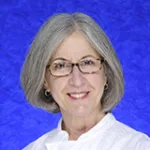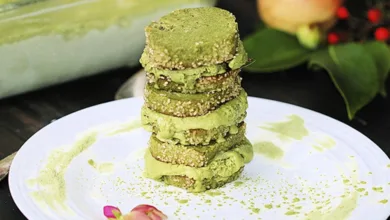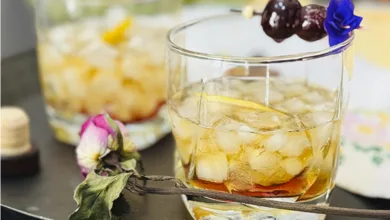How to Celebrate a Life After They’re Gone
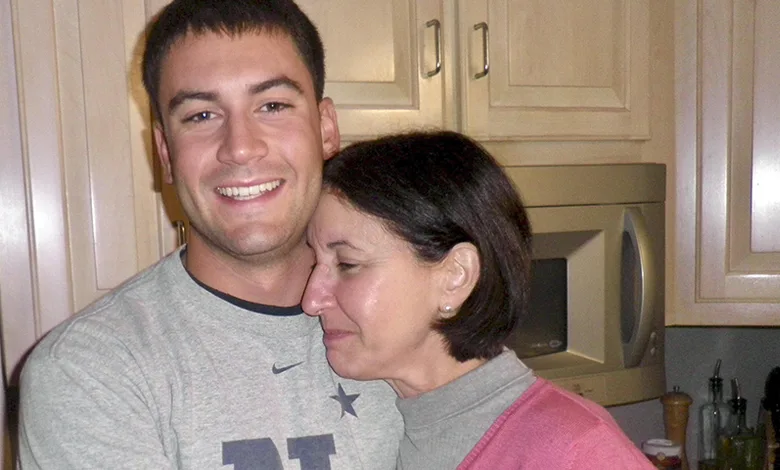
As a child growing up in a big old-world Italian family, I could not help but equate food with love. My mother had nine brothers and sisters, and my dad had three. Everyone was welcome at the table, including the neighbors and a few stray cats. Our family cooked and baked to celebrate good and bad times. Nothing was better than being surrounded by those you loved most with the smell of a simmering pot of meatballs and freshly baked cookies’ aroma. I was happy and well-fed, and I thought that when I grew up, I would be cooking for and with my happy kids.
As I grew up and started my own family, I cooked for all of us, filling my house with familiar smells, people, and memories from my childhood. That’s when I realized this became my “comfort food”—something I hadn’t paid much attention to before. However, I soon discovered that children are our greatest source of joy and sorrow. Cooking and baking nourished our bodies, bonded us as a family, comforted my soul, and helped me through the worst nightmare a parent can endure.
I want to share what I have learned about celebrating “a life,” what “comfort” food truly means, and how I grieved out loud and in a very public way. Grief gone public is the actual definition of mourning or what I came to call “my new world version of loss.”
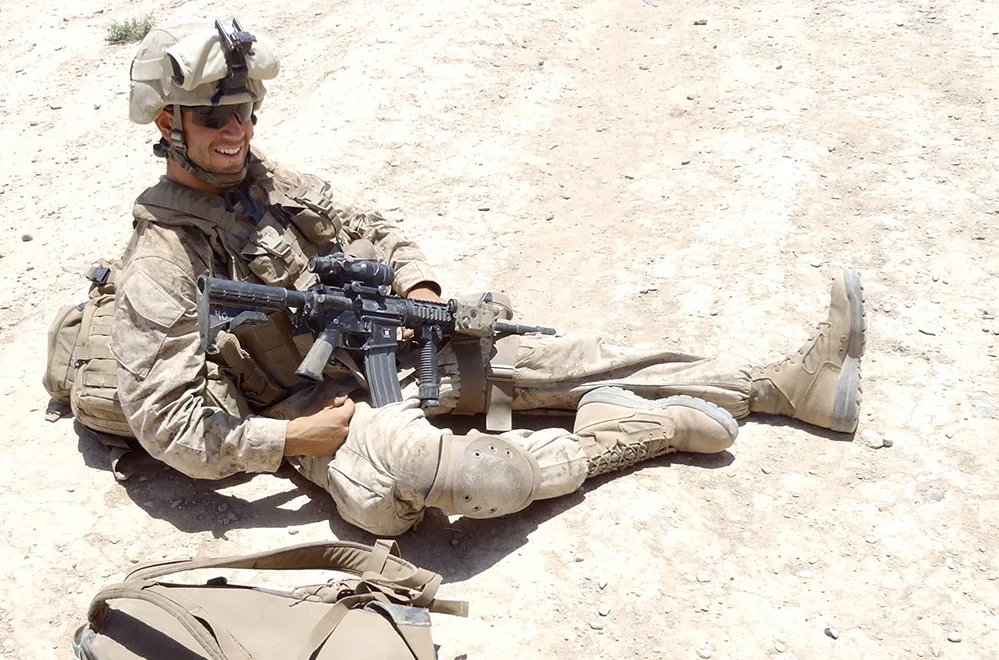
Grief has a beginning.
Mine began 4,749 days ago. It was a cool, rainy morning in Connecticut on April 16, 2011, and I was cooking a fragrant lentil soup, which always brought me back to my grandmother’s kitchen. In my mind, I was also planning a birthday and Easter menu, as my son, a US Navy Corpsman, would be on his way home from Camp LeJeune to celebrate his 23rd birthday with us. I was a happy mama. My thoughts were interrupted by a knock on the kitchen door. Through the curtains, I saw two men in their Navy dress blues. Neither one was my son. I knew what it meant, but how could it be?
William had already been on home soil for six months after his tour in Afghanistan. He came back unscathed despite being fired upon and traveling in a vehicle blown up by an improvised explosive device. He had saved lives and come home, so how could these men be outside my door now? At that moment, looking through the curtains, I was stunned, confused, bewildered.
How could they tell this proud Navy mom that the boy who graduated top of his class from corpsman school and was living his dream doing field medicine with the Weapons Company of the First Battalion Second Marines was dead? How could they tell me that the man who had just completed scout sniper training with the highest marks just yesterday died in a car accident as a result of sleep deprivation this morning? How could they deliver such shocking news? This death was a preventable accident. Why, after a whole week of sleep-deprived training, was he allowed to drive? The question haunted me.
Don’t let anyone tell you that grief is time-limited.
Grief has no expiration date. And if that sounds terrible, I am here to tell you it’s not if you can find a way to celebrate a life. Thirteen years later, William is the first one I think of when I open my eyes in the morning and the last one I think of before I close them at night. He is a bright light that never dims.
My biggest fear when my son died was that people would forget him or that one day, I would grow old and forget him. I immediately created a photo slide show to share at his funeral and, a short time later, a photo book for a few of his closest friends. Was that enough to celebrate his life and preserve life-long memories? My grief continued. It wasn’t over in three weeks or even six months. It’s a myth that it someday ends.
The sudden loss of a loved one is shocking and an assault on the heart and brain.
Many people—from doctors to widows—use the Kubler-Ross stages of death and dying (Denial, Anger, Bargaining, Depression, Acceptance) as a way of understanding grief, but I did not quite see it that way. The first year, I was full-on numb. My shattered heart and my mind could not process what had happened. I was a robot on autopilot. After two weeks of bereavement leave, I did what I was supposed to do. I returned to work as a physician assistant running a student health center. On the surface, I looked fine, but I knew I was not. I requested my co-worker nurses to watch me and help me to not make a bad decision on behalf of our patients. I was afraid I might do some harm because my brain was not the same. I had never lost a patient, and I feared that now.
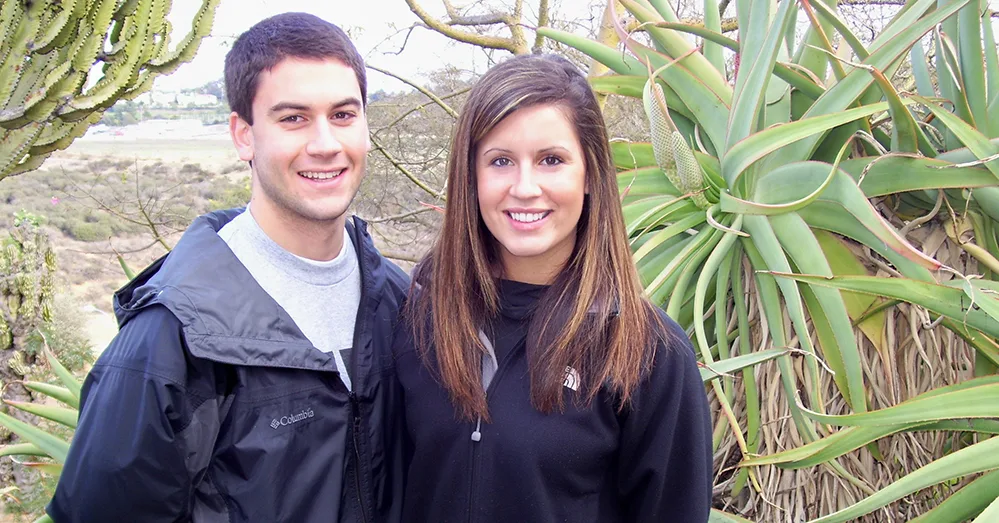
One year after William’s death, I realized I needed out of my old life and that I would never heal if I did not move on, move away, and take care of myself. It was my first brave decision, but one filled with incredible conflict, as I would be leaving our home in Connecticut. Our family filled that home with 30 years of delicious memories, and William loved growing up here. It was the place where we created his favorite meal, crispy coconut chicken dippers with Wowee Maui mustard, and his very favorite dessert—Boston cream pie.
Imagine me packing up his room. The scent of his cologne was still on his pillow, and his dirty handprint was still on the wall. Touching his things with gut-wrenching cries transported me back to the places we had been, the fun we had had, and the plans we had made. The memories flooded over me. It hit me more like a tsunami. Preserving these memories would allow me to move on.
We looked at over 100 houses before I found the one surrounded by woods where a 6-point buck greeted me. I had the most vivid dream on our first night in the new house in Pennsylvania. I got up from my bed and looked out the window. My son was looking up at me from the driveway. It was then I knew he goes where I go. I carry him in my heart.
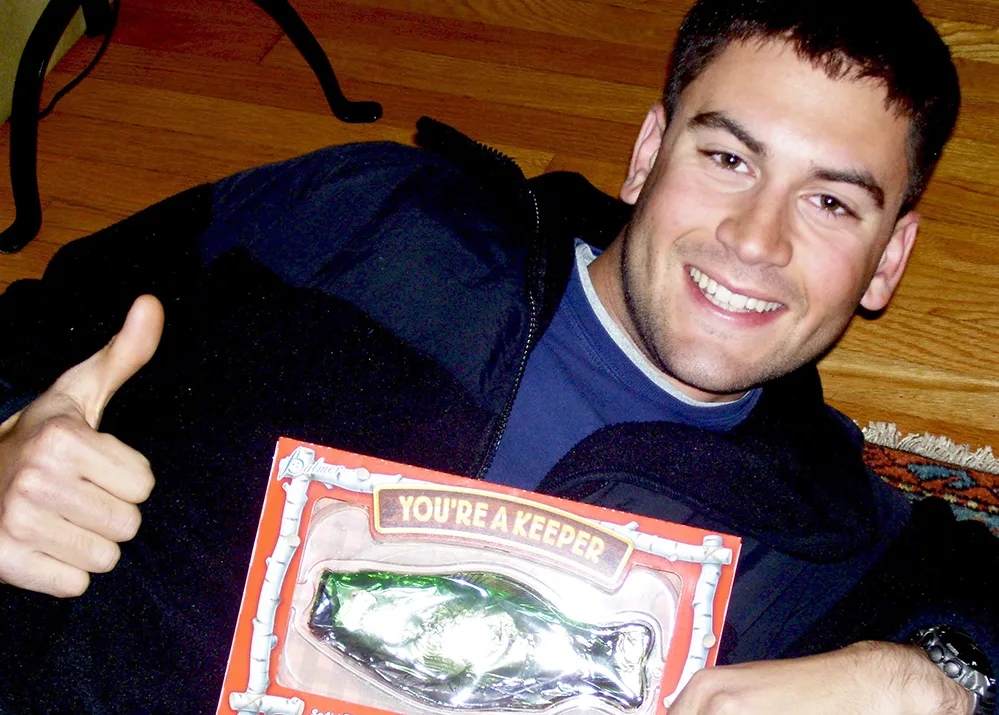
Year two was My Year of Anger. I woke from a year-long coma, and the realization my son was truly gone hit me like a ton of bricks. I had to go through it, like walking through a fire. I just had to keep on going. I needed to blame someone for this tragedy, so I took on the Navy. My cause was never to let this sleep-deprived situation happen to another. I wrote letters to Chief McDonald, Rear Admiral Flaherty, and the Secretaries of Defense. I even wrote to President Obama. I included scientific evidence that likened sleep deprivation to being full-on drunk. “It is essential for doctors, bus drivers, and pilots to prioritize sufficient rest before performing their jobs.” I wondered, how do those in charge of our sons and daughters not know this?
How in the world would my son—who had slept only a few hours over a week—be allowed to drive rather than ordered to bed?” I was so outraged. Like a mother bear protecting her cub kind of anger, it gave me a cause and maybe my first sense of positive energy and purpose. To my surprise, those I wrote to wrote back to me. They thanked me for my perseverance in championing the safety of our sailors and in a final message from Rear Admiral Norton, “We are always looking for new ways to combat risk, and with your son in mind, we will continue our efforts.”

There really is an angel on your shoulder.
All this time, there were signs of my son all around me, but what I remember most was a voice—his voice, saying, “Mom, you need to get over this.” On a particularly sad day, I saw a heart-shaped rock on the path as I walked in the woods. As I reached for it, without warning, I felt a bear hug like the kind my son used to embrace me. With tears streaming down my cheeks, I turned, thinking he was there as if he was on a covert mission; he’d sneak up from behind and then wrap his arms around my shoulders. With a squeeze in my chest, I felt his presence, but I thought I was nuts. I did not believe in ghosts or angels and chalked up that experience to being totally out of my mind. I did not share it with anyone.
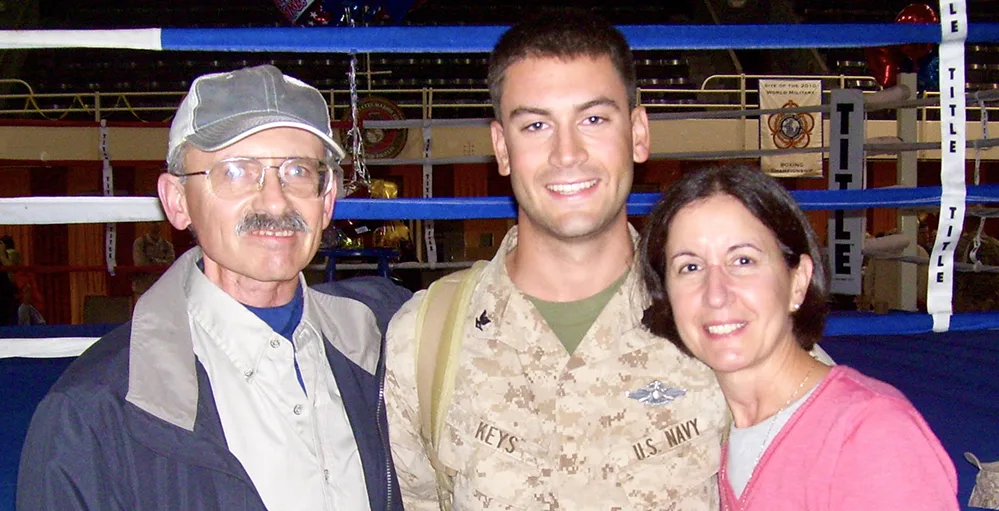
William loved the woods and spent most of his childhood hiding among the trees, training himself to be a Navy SEAL. At age five, while on a family vacation on a San Diego beach, he watched the Navy SEALs train as they maneuvered through the rough waters and declared then and there he’d become one of those guys. William was a voracious reader and would read every book on the subject. He would emerge from the woods drenched in camouflage mud, delighting me with his funny tales of evading a hiker on the trail or making me cringe with his tasting of ants and other assorted unsavory bits as a means of survival sustenance. He never wavered from his mission despite my trying to steer him in a different direction. I was the only one secretly elated when the Navy physical exam showed William to be color-blind. The fact that he was color-blind was news to us, too. It felt like I was keeping him from fulfilling his dream of being a SEAL since that gene comes from mother to son, but I never told him that. He could not be a SEAL, so he became a corpsman. He would be a healer and one of the best and brightest the Navy ever had.
More than anything, William loved his family, friends, and country. He was loyal to a fault, a man of action, not words. In death, I learned that he made everyone in his circle feel like they were his very best friends. I met many of his best friends worldwide through social media, and each had a “Will” story. I wanted to hear and preserve every one of those stories, too. I call them my son’s good, bad, and ugly stories, but I had to coax those stories out. I had to give permission to those who loved him to say his name out loud. Sometimes, we cried, but mostly, we laughed. As those stories knitted my heart back together, I knew we would all never forget him.
Food may be a manifestation of your love, but it is your thoughtful, often-silent presence that holds up a griever.
The moment the word got out of William’s death, people started bringing food to the house. I mean lots of food. I did not understand it, even though I had come from a family that celebrated funerals with lots of food. I could barely eat a bite. I quickly lost 11 pounds—which I couldn’t afford!!—but I came to know that all those goodies that arrived at the house were a manifestation of the givers’ hearts wanting to nourish my family’s bodies in hopes of giving us strength. But their presence and willingness to sit silently or share a story held us up.
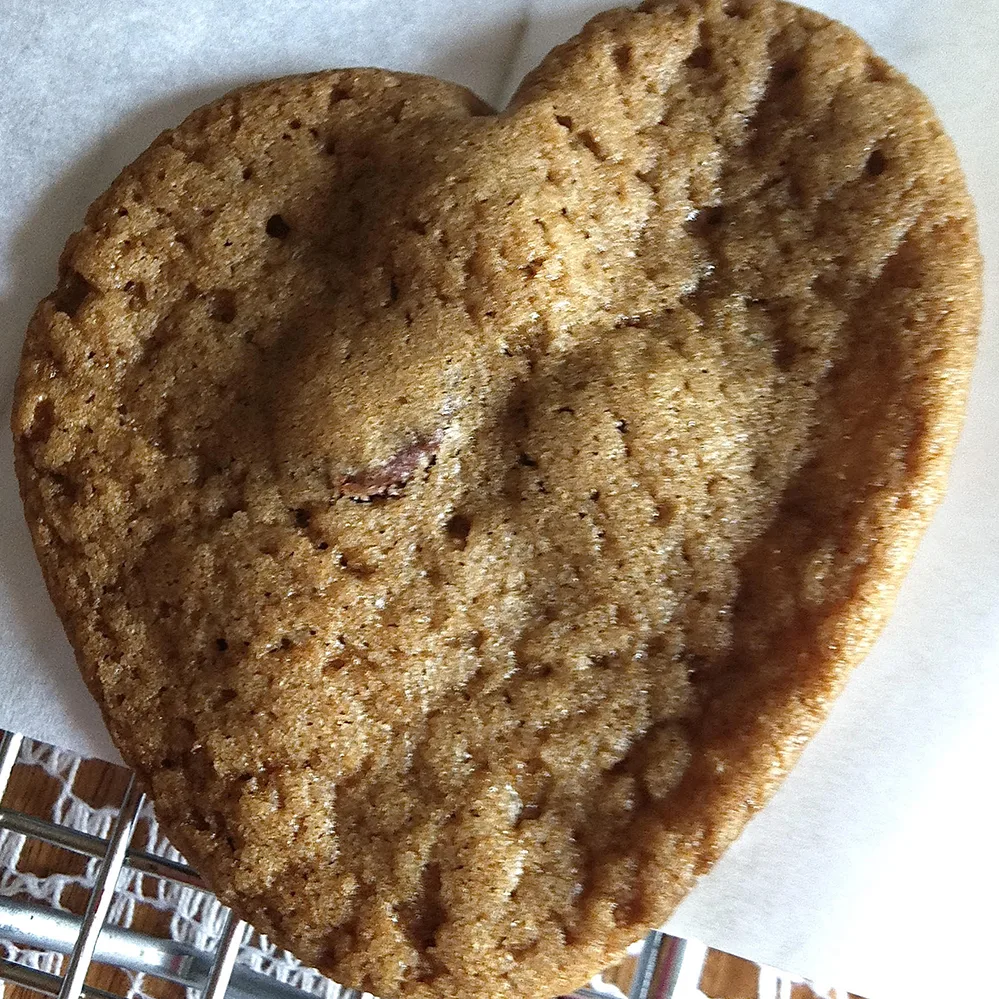
Baking as therapy
In year three, a chocolate chip cookie turned my grief around. Baking has always been my passion, but now it would be my therapy. If you don’t know, I have been a very successful, competitive home cook for 30 years. I’ve won hundreds of cooking and baking contests all over the country.
The people I cherish have always inspired my winning recipes. Yet, it was time for me to draw inspiration from my son and bask in his courageous spirit. So, on yet another very sad day, I reached for my mixing bowls and began creating “Sweet William’s Inspired & Spirited Chocolate Chip Cookies.” The spirit was him, but a little Jack Daniels was also in the recipe because he liked a mixed JD & Coke. The smell of that melting chocolate and the whiff of JD in the oven completely turned my mood from sad to glad. It was a revelation. Love is food made edible.
Remember that heart-shaped rock I mentioned earlier and that bear hug? Well, it happened again with the cookies. I felt a warm and loving embrace. I truly felt it.
I use an ice cream scooper when scooping out the cookie dough. For those who don’t know, a cookie scoop ensures every cookie comes out of the oven and is baked perfectly round. Yet, the cookie closest to my hand looked like a heart when I pulled the first batch of those inspired and spirited cookies out of the oven. At that very moment, I marveled at that heart-shaped cookie. I experienced that same bear hug sensation I felt on the trail in the woods. I called my husband to confirm what he thought the cookie looked like, and he said, “It’s a heart.” Once again, with this overwhelming sense of happiness, I questioned whether my son could be here. I nicknamed the moment “Whoosh.” So, as any intelligent retired medical person would do, I started to do a little research into this Whoosh phenomenon. Sadly, all I found were psychiatrists saying these moments of happiness I was having with my son were, and I quote, “my inability to accept that he was gone.”
So, what did I do? I ignored them. I chose to believe in myself as the expert in the field of losing a child. My son had plans. He wasn’t ready to die. These Whoosh moments meant he had unfinished business and was still with me. Not William in the physical sense, but his amazing, brave, and caring energy, and it made me happy. Happy of all things. Maybe angels here on earth do exist. I needed to step out of my comfort zone like he did. I needed to have the courage to follow in his light and take my grief public in the only way I knew how—through my recipes.
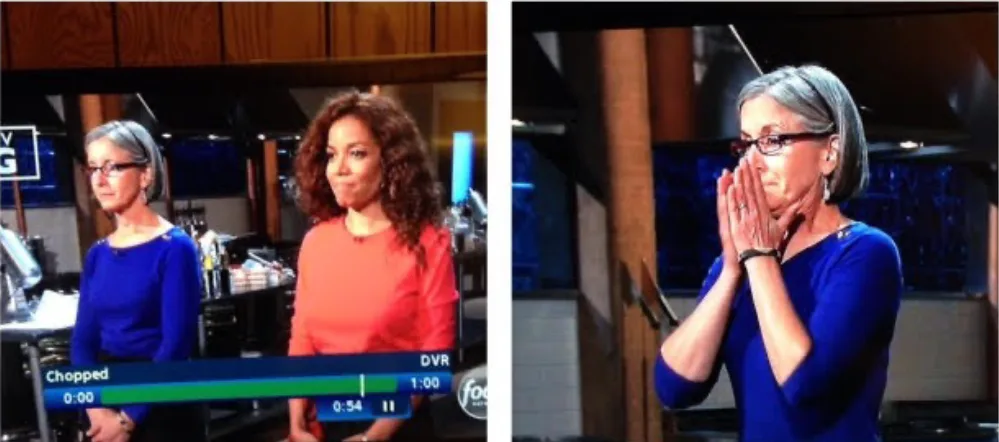
To celebrate a life, one must follow in their light.
My son was brave and often took the road less traveled–stepping outside his comfort zone. I needed to do the same, so I did the logical thing: I applied to be a contestant on the Food Network show “CHOPPED!” They were casting competitive home cooks. The show features four competitors preparing an appetizer, main dish, and dessert under a time constraint with secret ingredients, with each course judged and one contestant eliminated. The notion of being on TV preparing a basket of mystery ingredients was frightening, and I thought the chances of actually getting cast were slim until a moment in a Skype interview with the TV producers. I told them about my heart-shaped chocolate chip cookie when their mouths suddenly dropped, and their eyes got big. They said, “You are not going to believe this, but right now, as we see you through the screen, there is a reflection of the window behind you, and we see a heart over your head.” I responded, “Oh, that’s just him cheering me on. He really must want me to be on the show.”
Whoosh! I was chosen for a Mother’s Day special episode, competed and won in 2014. In the final dessert round, I made a version of William’s chocolate chip cookie, and in those final seconds, as I waited for Ted Allen to say stop cooking, I was getting a bear hug so tight I thought my heart would explode.
What is most remarkable about that is not that I won $10,000, but that it finally made me a true believer that these Whoosh moments are the pure love energy of my son.
These experiences led to the notion of a food blog—the perfect place to commit William’s memories. Not being very techy, a writer, or a food photographer, it was far-fetched to think I could create a virtual community or share my new world version of grief with anyone who would care. The only thing I was sure of was that good recipes bring people to the table. Would they see the food as a manifestation of my heart?
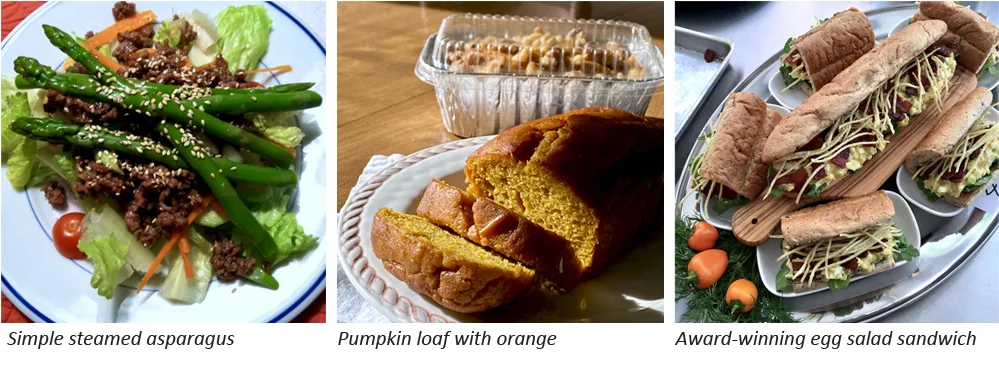
On October 21, 2013, Goodgriefcook.com was born and took me on much more than a grief journey. To my surprise, people read and share my blog. Inspired by sharing my story, strangers share their own stories. Moms who had lost children said they saw themselves in me and took comfort in knowing someone cared. There were powerful stories of healing, like the lady who transforms once-loved wedding dresses into infant gowns for babies who die prematurely. How about the story of the older woman who, 60 years later, still gets tears in her eyes at the mention of her dead child’s name, a reminder that the grief never ends? And then there is Krista, who, through the support of my blog, found the courage to speak publicly in Boston on organ donation celebrating her son, Aiden. Of course, there’s Marcie, who visits the blog, too. She celebrates her son, Harrison, by creating gorgeous, felted stones, leaving them wherever she goes for people to find. We shared the same feelings of unfathomable sadness and anger, and we learned some things. We realized we weren’t alone and that the tides of grief are common and everyday experiences. None of us was crazy, but I wondered most: Did they feel the presence of those they had loved and lost? And, of course, the answer is a thunderous yes.

I have vowed to follow in William’s light, celebrating his life rather than mourning his death. I will step out of my comfort zone whenever I can, much like he did during his life, at home and in the military. He encourages me to write and talk about the sad experience of losing one of life’s most precious gifts. He inspires me to bake it like I mean it and share my comfort food and thoughts. All are welcome to the table.
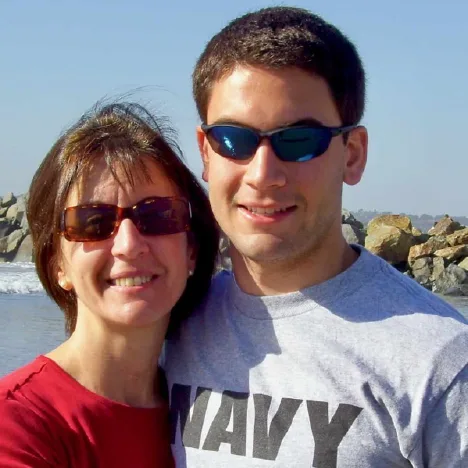
And from tragedy comes good. The Navy announced new rules on preventing sleep deprivation accidents, and my call for action contributed to this.
I hope you find the courage and a way to celebrate those you love most and have lost. There are many ways to do it, such as a memorial bench, a school scholarship, a fun run, or a blog.
However you choose to celebrate your loved one, never forget you are not alone.
 Sweet William’s Inspired & Spirited Chocolate Chip Cookies
Sweet William’s Inspired & Spirited Chocolate Chip Cookies
Created by Chef Lisa Keys
An easy-bake double chocolate chip cookie that is perfectly thin and crispy and infused with a little spirit. I hope you enjoy this recipe inspired by my sweet William from my heart to yours.
Prep time: 15 Minutes | Makes 3 dozen cookies
INGREDIENTS
- 2¼ cups unbleached all-purpose flour
- 1 tablespoon dry milk powder, optional
- 1 teaspoon baking soda
- 1 teaspoon salt
- 12 tablespoons (1½ sticks / 6 ounces) unsalted butter at room temperature.
- 1 cup firmly packed dark brown sugar
- ½ cup granulated sugar
- 1 tablespoon light corn syrup
- 1 large egg at room temperature
- 1 large egg yolk at room temperature
- 2 tablespoons bourbon or whiskey (William liked Jack Daniels)
- 1 teaspoon pure vanilla extract
- 1 (12 oz) bag Ghirardelli double chocolate bittersweet chips
DIRECTIONS
- Heat oven to 325° F.
- Line baking sheets with parchment paper.
- Whisk together flour, baking soda, and salt in a medium bowl.
- Mix cream butter, sugars, and corn syrup in a large bowl on high.
- Beat in the whole egg, egg yolk, bourbon, and vanilla.
- Reduce the speed to low and blend the flour mixture gradually until it is just combined.
- Stir in chocolate chips. Drop onto prepared sheets in 2 tablespoon (1 ounce) cookie scoops, leaving 2 inches between each cookie.
- Bake until cookies are lightly browned on the edges (rotating pans halfway through if baking two at once), 15 to 18 minutes.
- Let them cool on baking sheets for 5 minutes before transferring to a wire rack to finish cooling.
Note: Once you’ve scooped the dough into balls, you can freeze them in a single layer on a tray. Transfer the frozen balls to a freezer-safe zippered bag for up to 1 month. Do not thaw before baking.

 Sweet William’s Inspired & Spirited Chocolate Chip Cookies
Sweet William’s Inspired & Spirited Chocolate Chip Cookies